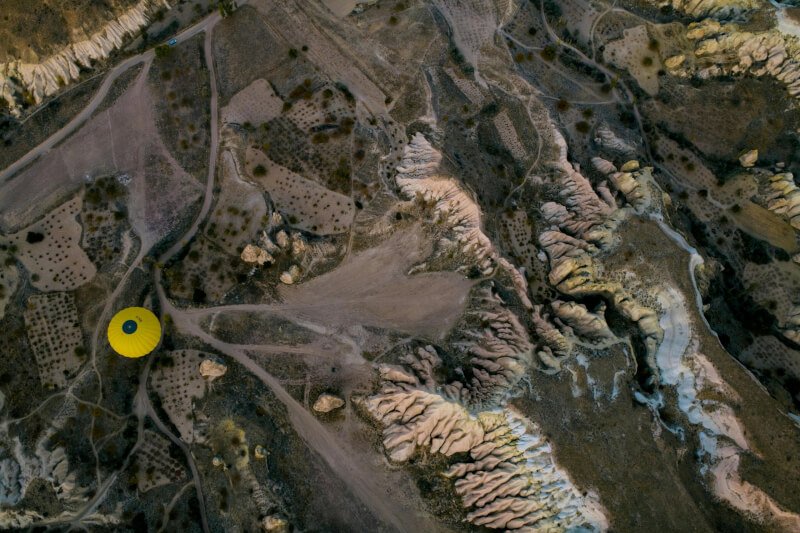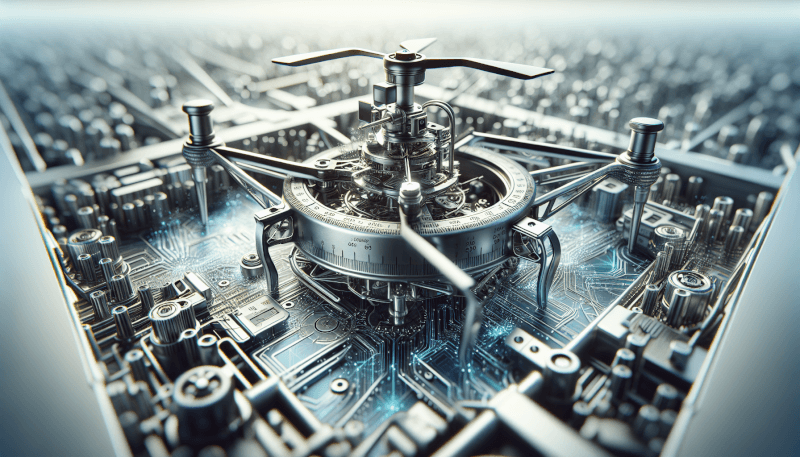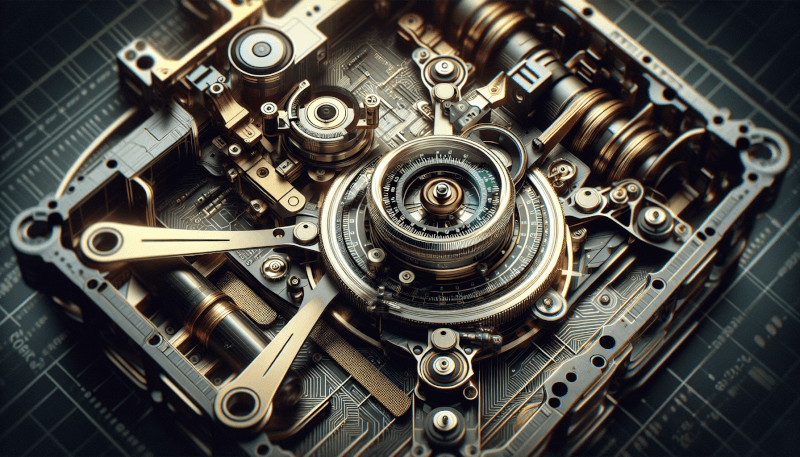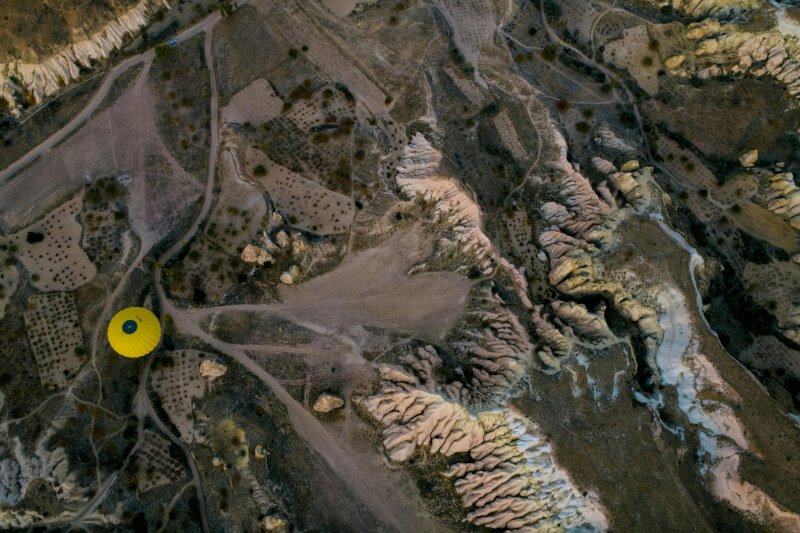In this article, you will learn the essential steps to effectively calibrate your drone’s compass and IMU. Ensuring accurate calibration is crucial for maintaining stable flight and preventing any unwanted errors or deviations in your drone’s flight path. Whether you are a beginner or an experienced pilot, understanding how to properly calibrate these important components will help you achieve optimal performance and maximize your flying experience. So, let’s dive into the process and get your drone ready for the skies!

Understanding Drone Compass and IMU Calibration
Calibrating your drone’s compass and IMU (Inertial Measurement Unit) is crucial for ensuring accurate flight performance and navigation. Understanding the purpose and steps involved in these calibration processes will help you fly your drone safely and enjoy a smooth flying experience.
What is a drone’s compass?
A drone’s compass, also known as a magnetometer, is a sensor that detects the Earth’s magnetic field. It helps the drone determine its heading and allows for accurate orientation during flight. Calibration of the compass is necessary to eliminate any interference and to establish a reference point for the drone’s internal compass.
What is a drone’s IMU?
The IMU of a drone consists of a combination of sensors, including accelerometers, gyroscopes, and magnetometers. These sensors collect data on the drone’s motion, orientation, and gravitational forces. Calibrating the IMU ensures accurate readings and proper functioning of the drone’s flight control system.
Why is calibration important?
Calibration is essential for accurate flight control and positioning of the drone. Without proper calibration, the drone’s compass and IMU may provide incorrect information, leading to unstable flight behavior, inaccurate navigation, and compromised safety. Calibrating the compass and IMU is a preventive measure to minimize the risk of accidents and improve flight performance.
Preparation Before Calibration
Before proceeding with the calibration process, there are a few preparatory steps to ensure a successful calibration.
Choose a suitable calibration location
Selecting a suitable calibration location is crucial. Look for an open area away from buildings, power lines, and other sources of magnetic interference. The calibration process requires a clear space to obtain accurate readings. Avoid places with dense metallic objects or electronics nearby, as they can interfere with the calibration process.
Ensure the drone battery is sufficiently charged
Make sure your drone’s battery is adequately charged before beginning the calibration process. A fully charged battery ensures uninterrupted calibration and prevents any unexpected shutdowns during the procedure.
Remove any metallic objects or electronics nearby
Before starting the calibration process, it is important to remove any metallic objects, such as keys, coins, or electronic devices, from the vicinity of the drone. These objects can interfere with the calibration process and affect the accuracy of the calibration results.
Compass Calibration
Calibrating the compass of your drone is a straightforward process that typically involves a few simple steps. Follow the steps below to calibrate your drone’s compass accurately:
Step 1: Power on the drone
Turn on your drone and let it initialize completely. Make sure it is on a level surface and there are no signs of abnormal behavior or error messages on the controller or drone display.
Step 2: Access the drone’s compass calibration mode
Refer to your drone’s user manual to determine how to access the compass calibration mode. This mode will allow you to initiate the calibration process. Different drone models may have different procedures for accessing this mode, so familiarize yourself with your specific drone’s instructions.
Step 3: Follow the on-screen prompts
Once in the compass calibration mode, carefully read and follow the on-screen prompts. These prompts will guide you through the calibration process and provide specific instructions on how to move and rotate your drone.
Step 4: Rotate the drone horizontally
Hold the drone level in your hand and rotate it horizontally 360 degrees. Make sure to complete a full rotation while keeping the drone level and steady. This movement helps the drone’s compass collect accurate data from all angles.
Step 5: Rotate the drone vertically
After rotating the drone horizontally, hold it upright and rotate it vertically 360 degrees. Again, ensure a full rotation while keeping the drone steady. This vertical rotation allows the compass to gather data from all directions, including the drone’s pitch and roll axes.
Step 6: Complete the calibration process
Once you have followed all the on-screen instructions and completed the rotations, the calibration process should be complete. Some drones may require additional movements or rotations, so carefully follow the prompts until the process is confirmed as finished.
IMU Calibration
Calibrating the IMU of your drone is equally important as calibrating the compass. Here’s a step-by-step guide to help you calibrate your drone’s IMU accurately:
Step 1: Power on the drone
Turn on your drone and let it initialize completely. Ensure that the drone is placed on a stable, level surface before proceeding with the calibration process.
Step 2: Access the drone’s IMU calibration mode
Consult your drone’s user manual to determine the specific procedure for accessing the IMU calibration mode. Different drone models may have different methods for accessing this mode, so refer to the instructions provided by the manufacturer.
Step 3: Place the drone on a level surface
Before starting the IMU calibration, ensure that the drone is placed on a level surface. This will help the IMU accurately measure the drone’s inclinations and maintain proper reference points.
Step 4: Follow the on-screen prompts
Once in the IMU calibration mode, carefully follow the on-screen prompts provided by the drone’s software. These prompts will guide you through the necessary movements and orientations required for calibration.
Step 5: Wait for the calibration process to finish
After initiating the calibration process, wait for the drone’s software to complete the calibration process. The duration may vary depending on the drone model, but it is important not to interrupt the process and allow it to finish completely.
Step 6: Verify the IMU calibration
After the calibration is complete, confirm that the IMU calibration was successful. Check for any error messages or abnormal behavior during the initial startup of the drone. If the calibration was successful, the drone should now respond more accurately to commands and maintain stable flight performance.

Tips for Successful Calibration
To ensure successful calibration, follow these tips and best practices:
Perform calibration in an interference-free area
Choose a location with minimal magnetic interference and avoid areas with power lines, radio towers, or metallic objects nearby. Performing calibration in an interference-free environment will yield more accurate results and improve the performance of your drone’s compass and IMU.
Avoid calibration near power lines or magnetic objects
Power lines and other magnetic objects can interfere with the calibration process and affect the accuracy of the calibration results. It is essential to perform calibration in an area free from these external influences to obtain reliable calibration results.
Calibrate the drone’s compass and IMU separately
Although the compass and IMU are related components, they require separate calibration processes. Follow the instructions provided by the drone’s manufacturer to calibrate the compass and IMU separately. Combining both calibration processes into one can lead to inaccurate results.
Re-calibrate if the drone experiences erratic behavior
If your drone exhibits erratic behavior or shows signs of unstable flight after a crash, change of location, or firmware update, it is advisable to re-calibrate the compass and IMU. Doing so will help rectify any discrepancies and ensure optimal flight performance.
Understand the calibration requirements for different drone models
Different drone models may have specific calibration requirements. It is important to consult the user manual or official documentation provided by the manufacturer to understand the precise calibration steps and recommendations for your particular drone model.
Benefits of Accurate Calibration
Accurate calibration of your drone’s compass and IMU offers several notable benefits:
Improved flight stability and control
Proper calibration enhances flight stability, allowing for more precise control of the drone. The drone will respond accurately to your inputs, resulting in smoother flight maneuvers and increased overall stability.
Accurate navigation and positioning
Calibrating the compass and IMU ensures accurate navigation and positioning for your drone. With correctly calibrated sensors, the drone will have a more precise understanding of its orientation and can accurately maintain a desired heading. This is particularly important for activities such as aerial photography or surveying.
Reduced risk of flyaways
Flyaways, where a drone uncontrollably drifts away or loses connection, can be mitigated through proper calibration. Accurate calibration improves the drone’s ability to maintain a steady position and minimizes the risk of unexpected drifts or flyaway incidents.
Enhanced safety during autonomous flight
Drones equipped with automated flight modes rely heavily on accurate calibration. By calibrating the compass and IMU correctly, the drone can execute autonomous flight modes with increased precision and safely navigate along pre-determined routes.
Optimized performance of intelligent flight modes
Many drones offer intelligent flight modes, such as ActiveTrack or Waypoints, that require precise calibration for optimal performance. Proper calibration ensures these intelligent flight modes can be utilized effectively and provides greater accuracy in capturing cinematic shots or following moving subjects.

Common Calibration Mistakes to Avoid
To ensure the accuracy of your drone’s calibration, it is essential to avoid these common mistakes:
Skipping or neglecting calibration
Skipping or neglecting the calibration process can lead to inaccurate flight behavior and compromised safety. Always prioritize calibration to set a reliable reference point for your drone’s sensors.
Performing calibration in unfavorable environmental conditions
Calibration should be performed in suitable environmental conditions, avoiding areas with heavy magnetic interference, power lines, or other sources that might impact the calibration process. Conduct calibration in an interference-free area for accurate results.
Incomplete or improper execution of calibration steps
Failing to follow the calibration steps correctly or incomplete execution can result in inaccurate calibration. Carefully read and understand the instructions provided by the drone’s manufacturer, and ensure each step is performed accurately.
Ignoring repeated calibration requirements
Depending on various factors, such as firmware updates or changes in location, it may be necessary to recalibrate your drone’s compass and IMU more frequently. Ignoring repeated calibration requirements can lead to incorrect readings and poor flight performance.
Failing to verify calibration accuracy
After completing the calibration process, it is essential to verify the accuracy of the calibration. Observe the drone’s behavior during startup, and check for any error messages or abnormal flight characteristics that may indicate a calibration issue. If necessary, re-calibrate to ensure accurate readings.
Understanding Calibration Error Messages
During the calibration process, you may encounter error messages that provide valuable information about the calibration status. Here is a brief explanation of the most common types of calibration error messages:
Interpreting compass calibration error messages
Compass calibration error messages typically indicate issues with the magnetic interference during the calibration process. These errors may suggest that there are magnetic objects or sources of interference nearby, preventing the drone from obtaining accurate compass readings. Ensure that you are calibrating in an interference-free area and follow the on-screen instructions to resolve any compass calibration errors.
Interpreting IMU calibration error messages
IMU calibration error messages generally indicate problems with the drone’s internal sensors. These errors could result from improper placement of the drone on a level surface, external vibrations or movements during calibration, or even hardware issues. Read the error messages carefully, ensure that the calibration steps are followed correctly, and contact the drone manufacturer’s support if the issue persists.
Troubleshooting common calibration error scenarios
If you encounter calibration errors during the process, here are some troubleshooting steps you can follow:
- Check for nearby magnetic objects or sources of interference and readjust the calibration location accordingly.
- Ensure the drone is placed on a stable, level surface during IMU calibration.
- Power cycle the drone and restart the calibration process if the error persists.
- Consult the drone’s user manual or contact customer support if the error messages persist or if you need further assistance.

Advanced Calibration Techniques
For advanced users or those facing specific calibration challenges, there are additional techniques and tools available:
Advanced compass calibration methods
In certain situations, advanced compass calibration methods may be required to achieve accurate readings. These methods may involve using specialized tools, such as a calibration mat or a magnetometer, to fine-tune the compass calibration. Advanced compass calibration techniques are typically documented in the user manual or supplementary guides provided by the drone manufacturer.
Advanced IMU calibration techniques
Some drones offer advanced IMU calibration options that allow for more precise adjustments and fine-tuning of the drone’s sensor readings. These techniques may involve performing temperature calibrations or conducting more detailed calibration procedures. Refer to your drone’s user manual or manufacturer-provided resources for specific instructions on advanced IMU calibration techniques.
Specialized calibration tools and software
Specialized calibration tools and software are available for drone users who require the highest levels of accuracy and precision. These tools may include calibration mats, electromagnetic field detectors, or software programs that provide detailed analysis and adjustment options. If you have advanced calibration needs or require precise measurements for professional applications, consider exploring these specialized tools and software options.
Conclusion
Properly calibrating your drone’s compass and IMU is essential for achieving accurate flight performance, precise navigation, and optimal stability. By following the outlined steps and adhering to recommended best practices, you can ensure that your drone operates reliably and safely.
Regular recalibration, especially after significant firmware updates or changes in location, is crucial for maintaining accuracy and mitigating any potential performance issues. Additionally, staying informed about your specific drone model’s calibration requirements and understanding common calibration mistakes to avoid will further enhance your drone piloting experience.
Remember to always consult your drone’s user manual or official documentation provided by the manufacturer for calibration instructions specific to your drone model. By prioritizing calibration and essential maintenance practices, you can enjoy a seamless flying experience with your drone while maximizing performance and safety.



